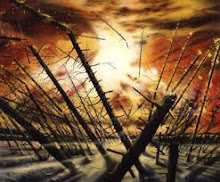The biggest asteroid to hit Earth on any given day is likely to be about 40 centimeters, in a given year about 4 meters, and in a given century about 20 meters. These statistics are obtained by the following:
Over at least the range from 5 centimeters (2 inches) to roughly 300 meters (1,000 feet), the rate at which Earth receives meteors obeys a power-law distribution as follows:
where N(>D) is the expected number of objects larger than a diameter of D meters to hit Earth in a year. This is based on observations of bright meteors seen from the ground and space, combined with surveys of near Earth asteroids. Above 300 meters in diameter, the predicted rate is somewhat higher, with a two-kilometer asteroid (one million-megatonTNT equivalent) every couple of million years — about 10 times as often as the power-law extrapolation would predict.
Seasonal variation in frequency of fireball sightings
The frequency of fireball sightings increases by about 10-30% during the weeks of vernal equinox. Even meteorite falls are more common during the northern hemisphere's spring season. Although this phenomenon has been known for quite some time, the reason behind the anomaly is not fully understood by scientists. Some researchers attribute this to an intrinsic variation in the meteoroid population along Earth's orbit, with a peak in big fireball-producing debris around spring and early summer. Research is in progress for mapping the orbits of the meteors in order to gain a better understanding of the phenomenon.




No comments:
Post a Comment